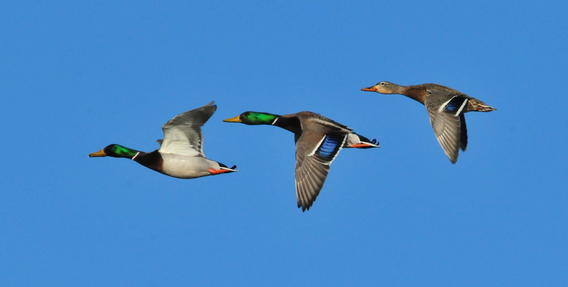
Waterfowl are economically and culturally important, and 1 million hunters contribute $700 million annually in the Mississippi Flyway.
Challenge: With weather and land use, shifts in seasonal waterfowl distributions, reduced harvest opportunities, and altered conservation & management strategies occur.
Principal Investigator(s):
- Lisa Webb (USGS, Missouri Cooperative Fish and Wildlife Research Unit)
Cooperator/Partner(s):
- Mike Brasher (Ducks Unlimited)
- Heath Hagy (US Fish and Wildlife Service)
Waterfowl are of substantial economic and cultural importance, with over 1 million hunters contributing approximately $700 million in total expenditures to local and regional economies annually. However, shifts or expansions in waterfowl distribution driven by the interacting effects of a warming climate, changes in habitat resources, and altered anthropogenic pressures will present challenges to effective management and conservation. Understanding historical changes in waterfowl distributions and the associated drivers of these changes would improve the ability of natural resource managers to anticipate future changes and develop more adaptive conservation and management approaches for potential shifts in waterfowl distribution.
The research team will quantify within season and across year shifts in waterfowl distribution in the Mississippi and Central flyways based on recovery of marked birds, hunter harvest data, and long-term waterfowl count data. Researchers will also analyze the individual and combined importance of weather and land use in explaining autumn and winter waterfowl distribution. This approach will be used to help map species-specific shifts in waterfowl distribution during autumn and winter, project future distributions and identify the factors required to provide sufficient habitat and food energy for shifting waterfowl distributions. Project personnel and partners will include state waterfowl biologists with the Mississippi and Central Flyway Technical Committees, Ducks Unlimited biologists and U.S. Fish and Wildlife Service biologists.
Read more from the CASC Project Explorer.
